Jewelry as a form of artistic expression and contemporary craft is the focus of Israel Jewelry 6. The sixth edition of the bi annual exhibition is curated by Nirith Nelson, and opened at the Israel Museum on June 10, 2012.
In a preview tour of the exhibit, Nelson discussed her thought process in selecting the theme, and her subsequent dialogue with the 35 participating artists. Describing the work of the jewelry maker as a solitary pursuit, crouched over small objects, Nelson said that it is a craft that develops an intimate body language, as if the artist is turning inward, perhaps encountering the “other” within the self, an alter ego. These thoughts led her to the theme “I Am an Other,” which each artist was free to interpret in his or her individual way. Nelson also noted that in contrast to what she observes elsewhere in the world, many Israeli jewelry makers never wear jewelry. With this theme in mind, Nelson approached the artists, asking them to create something on the theme of the alter ego, with the stipulation that they “make something for yourselves.”
The result is an exhibit that is not only visually and aesthetically appealing, but also invites reflection on the different associations raised by each work. The exhibition is accompanied by a catalog with essays, and Uri Gershuni’s photographs of the artists (or their representatives) wearing their jewelry. The exhibit space, designed by Assaf and Naama Varshavsky (Elul Design Studio), is only lit from within the jewelry cases, enhancing the sense of an intimate look into private realms.
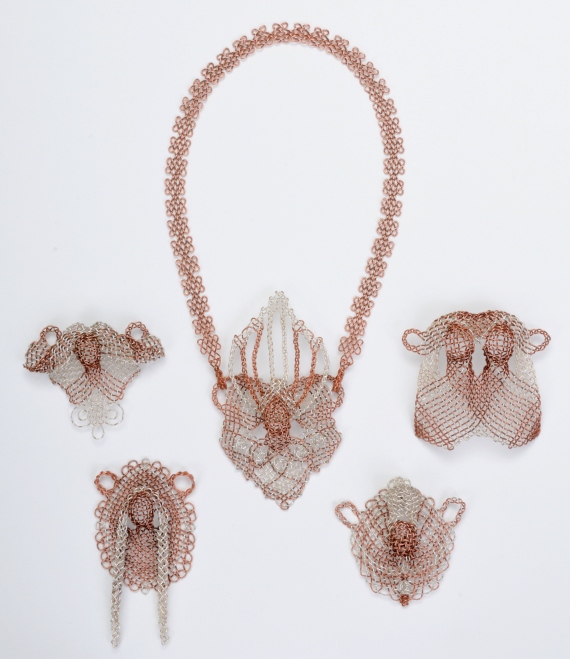
Vered Kaminski’s woven creations reference ancient Hellenistic medallions.
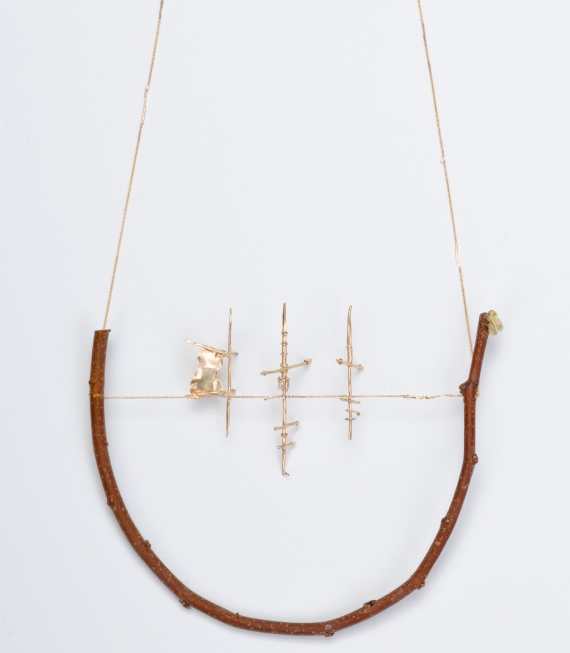
Merav Oster-Roth’s work is inspired by a poem of Adi Tishrei, saying that our bodies are composed of 20% shipwreck, and the related associations.
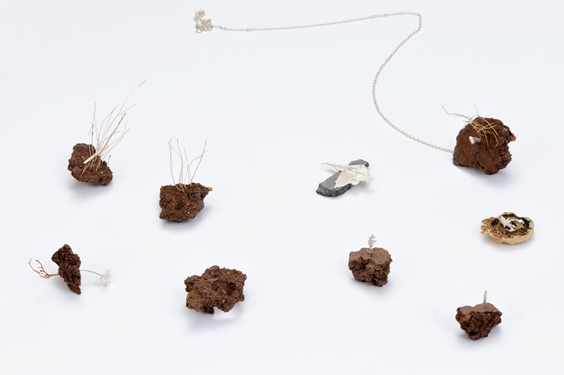
Noga Haddad grew up in Kibbutz Ayelet Hashahar, in the northern part of Israel. Curator Nelson said that the soil used in these works recalls the ground of Haddad’s childhood home near the border and the contradictory feelings of belonging and danger; the “Watchman” constantly on the alert to protect that home.

Delicate, evocative, Kobi Roth’s drawings in silver reflect the vulnerability of the deer in the thicket, the animal in hiding, poised to flee.
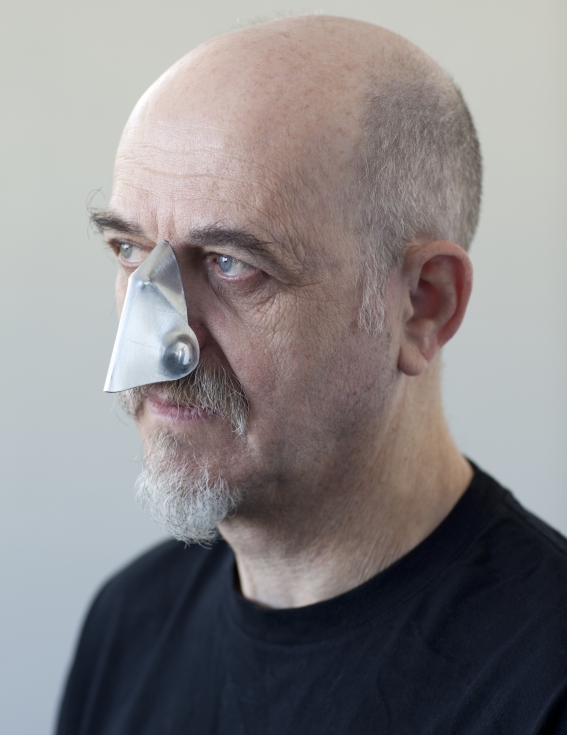
A tribute to the Jewish nose by Yaakov Kaufman – Curator Nelson recounted that when artist learned that his father had asked the photographer to retouch and reduce the size of his nose in a family portrait years ago, he decided to create this ornament to celebrate the Jewish nose. Nelson further reported that the item of jewelry is perfectly functional, she tried it on herself.
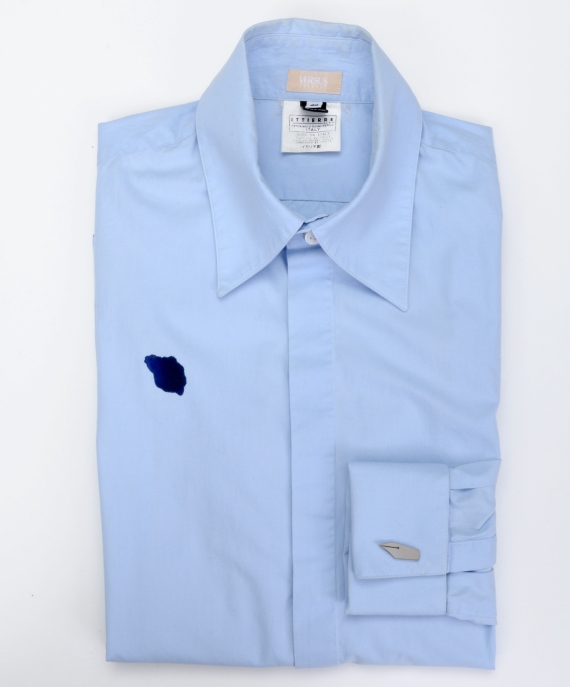
Doron Rabina’s contribution to the exhibit is sure to attract the attention of those who ply the pen. The unusual work challenges our definition of “jewelry” with humor and visual appeal.

Ashkenazi Jewry is as well known for its cholent as for its lack of a visual cultural tradition. Naama Bergman addresses both in her work, contributing this intricate design created from one of the traditional cholent ingredients: cow intestines.
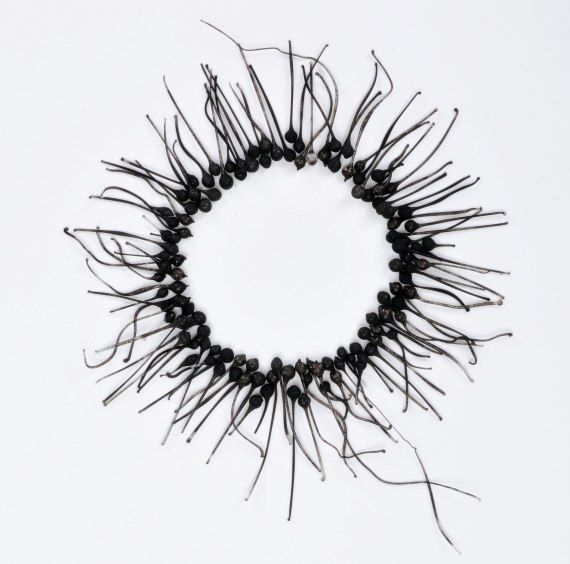
Nirit Dekel usually works with glass; here the concept of the alter ego is represented in her choice to focus on what is usually the by-product of her artistic process: coal.
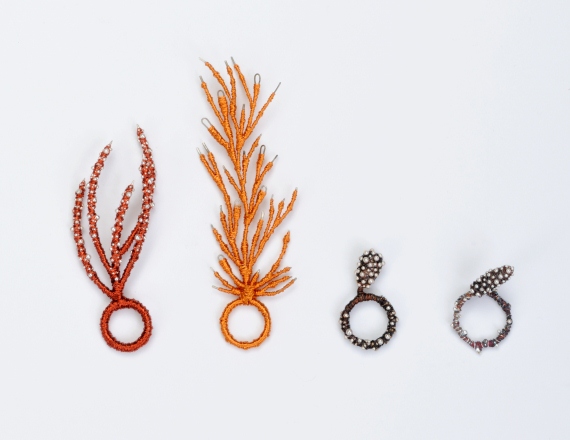
Vered Babai’s work process is characterized by its precision and control (see her work in Israel Jewelry 5), recounted Nelson. In this case, the artist chose to expose her work to the elements, introducing the unpredictable effect of fire on the copper, something wild and free.
The exhibition will remain open through November 20, 2012.
Eretz Israel Museum, 2 Haim Levanon Street, Tel Aviv, 03-64152440
Opening Hours: Sun – Wed 10:00 – 16:00, Thurs 10:00 – 20:00





